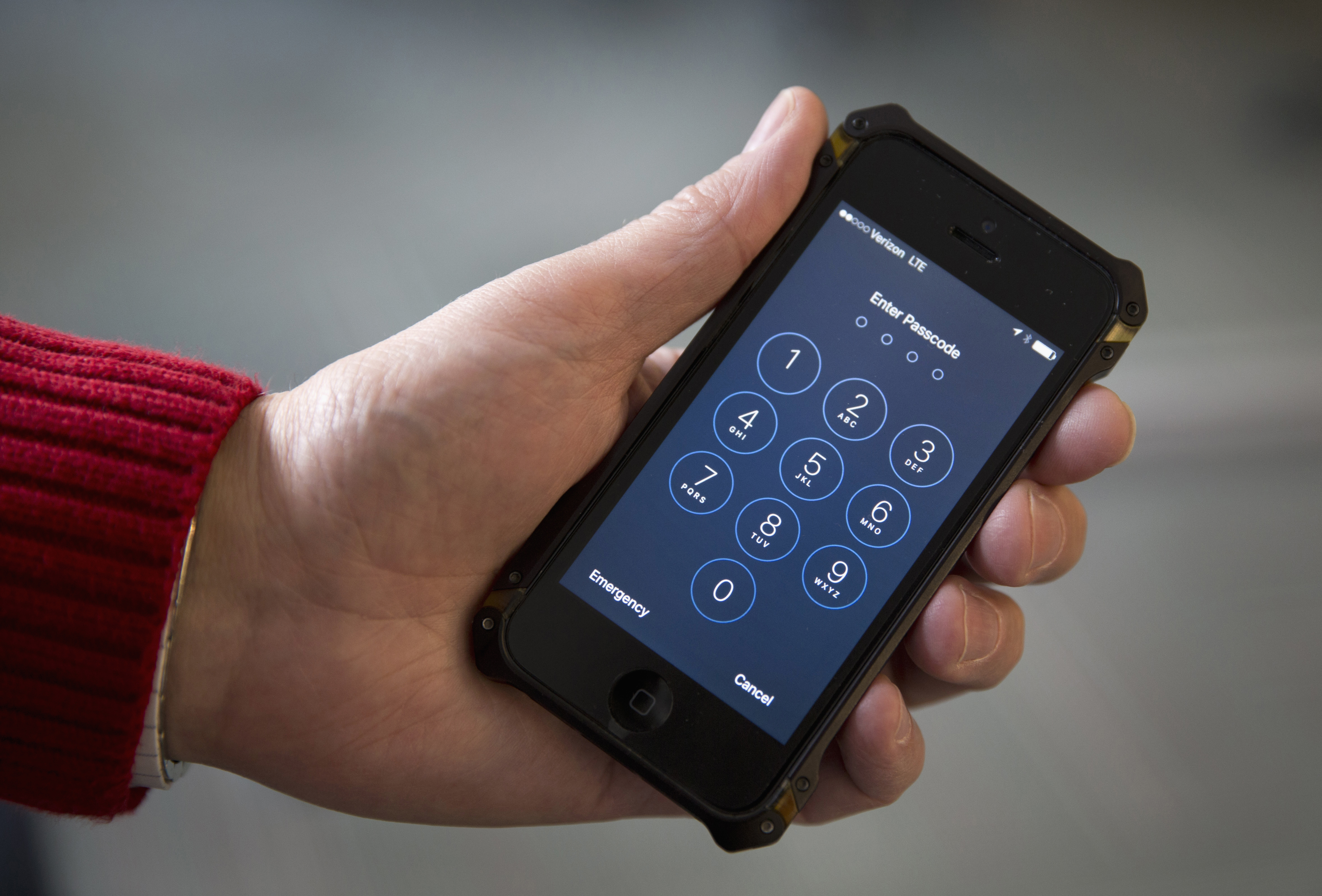
This Feb. 17, 2016, file photo shows an iPhone in Washington. Encryption of smartphone data is preventing law enforcement and investigating agencies from prying into the minds and activities of crime suspects, authorities are saying. AP FILE
BOSTON, United States — The phone used by the gunman who fatally shot 26 people inside a small Texas church has become the latest flashpoint in the privacy wars.
Federal investigators complain that they can’t get into Devin Patrick Kelley’s phone thanks to security features that shield messages, photos and other stored data from prying eyes. Such measures present a growing frustration for the FBI, which says it’s been unable to retrieve data from roughly half the mobile devices it’s recently tried to access.
Technology companies insist that strong security based on data-scrambling encryption is essential to protecting digital privacy. Law enforcement officials grumble that warrants should allow them to sidestep such measures; the companies say they often can’t unlock such phones even if ordered to.
The gunman’s phone was flown to an FBI computer investigation lab in Quantico, Virginia, in an effort to gain access to it, said Christopher Combs, the special agent in charge of the FBI’s San Antonio division. Combs declined to release the make or model of the phone.
Here’s how things got to this point.
__
WHY POLICE CAN’T GET INTO PHONES
Apple and other tech companies have been steadily increasing their use of encryption and other safeguards, following recent hacking attacks and earlier government-surveillance revelations from former National Security Agency contractor Edward Snowden.
Last month, FBI Director Christopher Wray said that in the first 11 months of the fiscal year, agents were unable to access more than 6,900 mobile devices. Device makers often lock up device data so that only the owner can get into it.
“They’re in the business of protecting the privacy of the individuals who use their phones,” said Ajay Arora, CEO and co-founder of Vera, an encryption software company.
Last year, the FBI sought to force Apple to break into the locked iPhone of a gunman in the San Bernardino mass shootings. Apple resisted what its CEO Tim Cook said was an intrusive request that could set a dangerous precedent. The FBI ultimately opened the phone without Apple’s help by paying an unidentified vendor for a hacking tool, averting a court battle.
__
WAYS AROUND ENCRYPTION
But there are often other ways to access information kept on phones.
If the Texas gunman backed up his phone online, investigators could get a copy of the backup with a legal order — usually a warrant. They can also get warrants for any accounts he had at server-based internet services such as Facebook, Twitter and Google.
These services typically encrypt online data, but the companies usually hold the keys and will unlock the data with a legal order. That’s even true for Apple’s iCloud, where iPhones are often — though not always — backed up.
That only gets investigators so far. Some end-to-end encrypted messaging services such as WhatsApp, Telegram and Signal use stronger security that locks up data with private keys, and which the companies can’t unlock themselves.
The Justice Department under President Donald Trump has suggested it will be aggressive in seeking access to encrypted information from technology companies. But in a recent Boston speech, Deputy Attorney General Rod Rosenstein stopped short of saying exactly what action it might take.
__
WHAT LAW ENFORCEMENT CAN DO WITH THE PHONE ITSELF
Combs said Tuesday it could take specialists weeks to unlock the phone and access material that may reveal the killer’s motive and other information.
The FBI’s first option is likely to pressure the device-maker to help access the phone, but if that won’t work they could try breaking into it. Sometimes “brute force” attacks aimed at methodically guessing a user’s passcode can open a device, though that won’t work with all phones.
Arora said the difficulty of breaking into the phone would depend on numerous factors, including the strength of the gunman’s passcode and the make and model of the phone. Police may have more options if it’s an Android phone, since security practices can vary across different manufacturers.
The FBI has said that the third-party method it used to unlock the San Bernardino shooter’s phone only works on the older iPhone 5C. The newest Apple phones are believed to be even tougher to crack, following a recent update included with this fall’s iOS 11. /cbb